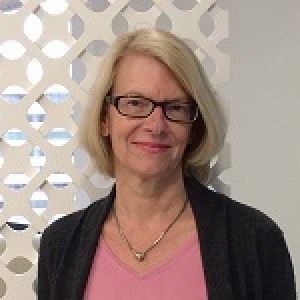
Susan Zwerling is a Museum Assessment Program Officer for AAM.
I recently interviewed Aurora Regional Fire Museum (ARFM) Executive Director Brian Failing (BF) about the museum’s Community Engagement MAP experience. He joined this small museum in Aurora, IL. as their director in March 2016 and they began their first MAP in December 2016. The museum celebrates its 50th Anniversary in 2018.
Susan Zwerling (SZ): Brian, you called me a few weeks after your peer reviewer came to Aurora to visit your museum and you were bubbling over like a flute of champagne. You were super excited about all the positive ideas and initiatives that were generated during that visit. Before you tell us all about your success stories, let’s back up a few months and find out why you decided to participate in MAP, to begin with.
Brian Failing (BF): When I came to ARFM I immediately saw that our iconic 1894 restored firehouse building was a solid anchor for downtown Aurora, but our visibility as a museum and our engagement with other community groups was limited. We realized that many people either didn’t visit us or didn’t even know we existed. They noticed the building but didn’t think about coming inside.
Skip over related stories to continue reading articleAdditionally, Aurora is a diverse community and we wanted to engage more with diverse audiences. Our two main visitor categories were the Firefighting profession or families with children.
We decided that a Community Engagement MAP could help us understand why our visitation and our partnerships were limited and take steps to improve and expand them.
SZ: Your team completed the MAP Self Study Workbook and then your peer reviewer came to visit in June. What happened that made you call me?
BF: We had great participation and our peer reviewer met with at least 5 Aurora organizations while he was in town. Afterwards, representatives from the City and community groups began offering suggestions, ideas, and help. We experienced improvement in 3 key areas right away: building signage, board and committee meeting structure, and event collaboration. We were especially happy to partner with the local science museum on our Aurora Museums After Dark Program (and we have other new partners on the calendar for that program) and to start a new program called Fire Fascinations. Fire Fascinations, a hands-on make and take educational program, was born out of a recommendation made by our peer reviewer.
SZ: You also mentioned an upcoming breakfast event that you were feeling pleased about.
BF: Yes! We recently hosted a “Business and a Beverage” with Invest Aurora for about 60 city officials and people involved in downtown Aurora businesses. We really increased our profile and had conversations with so many new people about not only our work but all that is going on in downtown Aurora.
SZ: What areas of your museum have seen improvement as you got your report and began implementing more new ideas?
BF: Our attendance is through the roof; it’s doubled in the past year! In the categories of tours and rentals, our attendance figures have quadrupled! And, we reactivated our membership program and surpassed our revenue goals for membership by 50%.
SZ: I can see why you’re so excited and enthusiastic! Tell us more about the organizational changes that have happened in the past year.
BF: We created a new Board Handbook and updated several Core Documents: the Mission Statement, Our Code of Ethics and our Collections Policy. We’re moving towards Core Document Verification. And, we have been focusing on our marketing. We were able to collaborate with Lewis University’s Office of Community Engaged Learning. Their students worked with us to create our first social media marketing plan, and we are now on Instagram!
SZ: Do you have any advice for other small museum considering MAP?
BF: Yes, I would tell them to be sure and involve a lot of people in working through the self-study workbook. Working on it sooner rather than later is also important. That way you can take plenty of time to do it well and really learn more about your museum and your community. And, the peer reviewer is so valuable – a fresh perspective from an outside professional is really helpful.
SZ: Is it fair to say the museum was already heading in a positive direction but MAP offered some new ideas and energy?
BF: MAP invigorated me! It laid the groundwork for us to be more strategic. It pushed us to grow and become bigger and better. We are now growing everything we do.
About the Museum
Both the ARFM and its building have grown and changed over the years. Established in 1968, the museum celebrates its 50th Anniversary and its many accomplishments in 2018. The City of Aurora and the ARFM have been excellent stewards of their historic building, which was closed to the public for several years for state-funded building renovation and restoration of the original façade. In addition to standards-aligned tours, hands-on activities, and exhibits, there is an archive of local history documents open to the public and a small auditorium for programs and events. Because the current fire station is nearby, group tours can combine two tours into one visit and compare a modern fire station alongside a historic experience.
About MAP
Since its inception in 1981, the Museum Assessment Program (MAP) has helped over 5,000 small and mid-sized museums of all types strengthen operations, plan for the future and meet standards. MAP is a one-year process of self-assessment, institutional activities, and consultative peer review. There are three different types of assessment: Organizational, Collections, and Community Engagement. The next Application Deadline for MAP is February 1, 2018.









Comments